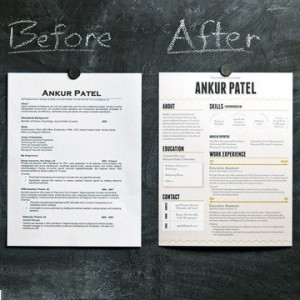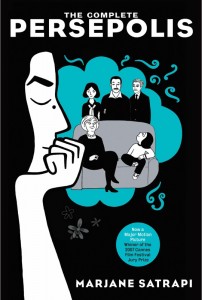When I took Professor Tamara Harvey’s class for English 701, I had to read Scott McCloud’s Understanding Comics. It absolutely made me think differently about comics and the graphic novel, but I still wasn’t sold on their usefulness in the classroom.
What’s ironic about my dismissal of using graphic novels in the classroom is that I was a yearbook adviser. I went to countless workshops all over the country to learn how to get students to READ the yearbook and every workshop stressed using modular coverage (a “mod”). A mod can be a graph or a little side story with a photo or statistics or something like that– think pictures and infographics. The point is that it breaks up a story into bite-sized chunks to make the information more palatable. I knew that if I wanted students to read the yearbook, I’d be more successful in my pursuit by using mods.
Three years later this pin on Pinterest, combined with this week’s reading, finally sold me on why it’s perfectly acceptable to use a graphic novel in the classroom:
The caption for this picture says, “This is what you’re competing with, people. If you don’t know how to make a pretty resume—outsource it to someone who does”. It made me realize that just as language changes, so does its presentation to people. I don’t care how old you are, sometimes “pretty” language, complete with pictures, is the most effective way to communicate something; this week’s readings are an example of this.
Joy explained it well in her post. Unlike Joy, I read (or re-read) McCloud’s chapters before reading the other articles. I thought it was almost hypocritical for the authors to laud the picture book or graphic novel and yet describe the importance of lines, for example, using words. McCloud’s work shows just how much work and thought goes into the creation of comics. Rather than only using words, the author uses pictures as well to communicate. That is talent.
If you are like three-years-ago me, and you are still on the fence about using graphic novels in the classroom, consider reading Persepolis by Marjane Satrapi.
I read it for Professor Harvey’s class and learned more about Islamic culture and the revolution than I’d ever learned before (and yet I still questioned the presence of graphic novels in the classroom!). I could have read a memoir on her, but it probably would’ve taken me a longer time to read it, and I wouldn’t still remember it, that’s for sure.
I guess what I’m trying to say is that comics, graphic novels, infographics, mods– it’s where we are going. Just pick up a newspaper! Think about how much more you learned from textbooks when they used pictures. Thinking back to one of our first readings from Lee Shulman’s article, “Taking Learning Seriously,” he said “If we take learning seriously, we must take responsibility for the ubiquity of amnesia. We need to reexamine much of what we teach, and how we teach it” (13). Graphic novels definitely deserve a place in the classroom because if this sleep deprived mom can remember comics and a graphic novel from three years ago, I’m pretty sure a teenager will as well.


What a great post, I think I need to go back and read all of your previous writings to see if there are any other gems. Thank you for the reading suggestion.
I’m glad that you may finally be a convert to using graphic narratives in the classroom! In terms of our own engagement with Nat Turner, Kyle Baker has explicitly said that one of his target audiences for the book are high school students.